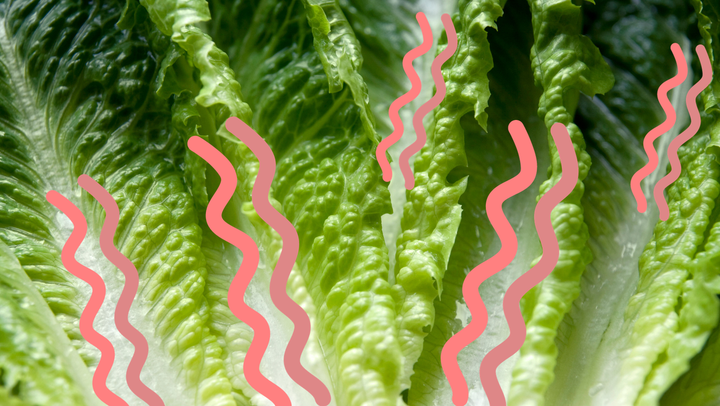
Vowing to eat healthier is a common way to kick off a new year. You might start by researching salad recipes and stocking up on lettuce and other greens. But after a few days in the fridge, your lettuce might not be looking so crisp. Maybe your romaine is showing some pinkness or redness on its leaves, or your arugula or mesclun is getting soggy or mushy.
This can leave you wondering: Do these changes mean your salad greens aren’t safe for consumption? Can you still eat those weird leaves?
“Lettuce is so thin and fragile,” explained Trevor Craig, a food safety expert and corporate director of technical training and consulting at Microbac Laboratories. “It breaks down easily and produces a lot of liquid.”
Still, he said, that doesn’t always mean the greens are unsafe to eat. You just might not want to. Mushy or discoloured leaves can be unappetising, and you may still worry about food safety, especially since salad greens are often linked to food recalls and outbreaks of foodborne illness.
To better understand the changes in salad greens, food safety and produce experts explain why they occur and how to know if your lettuce is still safe to eat.
Why does some lettuce turn pink?
The reddish-pink discolouration that can show up on romaine and iceberg lettuce is known as “rusting,” and it’s a natural post-harvest characteristic, Katie Sabatini, a registered dietitian and food safety and quality assurance manager at Little Leaf Farms, told HuffPost.
“The primary reasons behind this discolouration are due to improper handling and storage,” she said. “If the leaves are bruised or cut, or if the lettuce is stored with an excess of moisture, this can result in much faster development of rust on your leaves.”
Over time, as lettuce oxidises, it produces polyphenols ― plant compounds with numerous health benefits ― as a protective measure to prevent the growth of mold and fungi. This can give it the rust appearance, Sabatini said. Another contributor is exposure to ethylene gas that’s naturally emitted by other produce in your refrigerator.
The rusty discolouration may be unsightly, but it doesn’t make the lettuce unsafe to eat, Sabatini said. You can just chop it off if it bothers you.
“As long as your lettuce is still crisp and the rest of the leaves appear vibrant and firm, it’s safe to eat the pink parts,” she explained.
Why do some packaged greens get wet and soggy?
The fragile nature of leafy greens makes them sensitive to being jostled or crushed during picking, packaging or transport, Craig said. As a result, the greens might look wilted, dark green or soggy, but they’re not necessarily unsafe.
However, dark or wet leaves can signal spoilage, Sabatini said. As greens age, they release moisture, which causes them to darken or get soggy. Overpacking, temperature changes during transport, and improper storage can also increase moisture.

Harmful bacteria, like E. coli, salmonella or listeria, can start to grow in all this extra moisture, which may increase the likelihood of making you sick, Craig said. Foodborne illness can cause diarrhoea, stomach cramps, vomiting and fever, according to the U.S. Centres for Disease Control and Prevention.
Since they’re unappetising anyway, Sabatini recommended that you toss out any limp, soggy, slimy, smelly or unusually dark greens as a precaution.
What to look for when buying packaged greens.
Before buying salad greens, give the package a once-over. Avoid purchasing a product if you notice:
Many slimy, dark or soggy leaves in the package, which can signal that the produce is past its prime and might pose a risk.
Liquid pooling in the corners of the package. A bit of moisture is fine, Craig noted, as long as it’s clear and only a few drops of it.
Mould or black spots growing on any leaves.
Always check the best-by and sell-by dates, too, Sabatini urged. Best-by dates can tell you how long the greens should stay fresh, not necessarily how long they’re safe to eat. Sell-by dates tell retailers how long to display a product, but you can use it as a guide to buy the freshest pack on the shelf.
Usually, if the greens still look good past the dates on the package, they’re likely safe to eat, Craig said.
How to safely store and eat greens at home.
Storing salad greens correctly will help keep them fresh for longer. Sabatini suggested keeping leafy greens separate from other fruits and vegetables to minimise ethylene gas exposure.
Keep greens cold, preferably between 34 and 38 degrees Fahrenheit, to slow rusting and breakdown. A crisper drawer is your best bet so greens can “live in a consistently cool and somewhat controlled environment,” Sabatini said.
Before eating, sort through your leaves and remove anything soggy, discoloured, slimy or wilted, to be on the safe side. Avoid eating anything with an unpleasant or sour odour.
A few bad leaves likely won’t cause the rest of the pack to go bad, but if the majority of them seem off, throw the whole package away, Sabatini said. Consider composting the greens to combat food waste.
“If you’re unsure about the state of your leafy greens, it’s best to err on the side of caution,” she said. “You can’t see or smell harmful foodborne illness-causing microorganisms.”